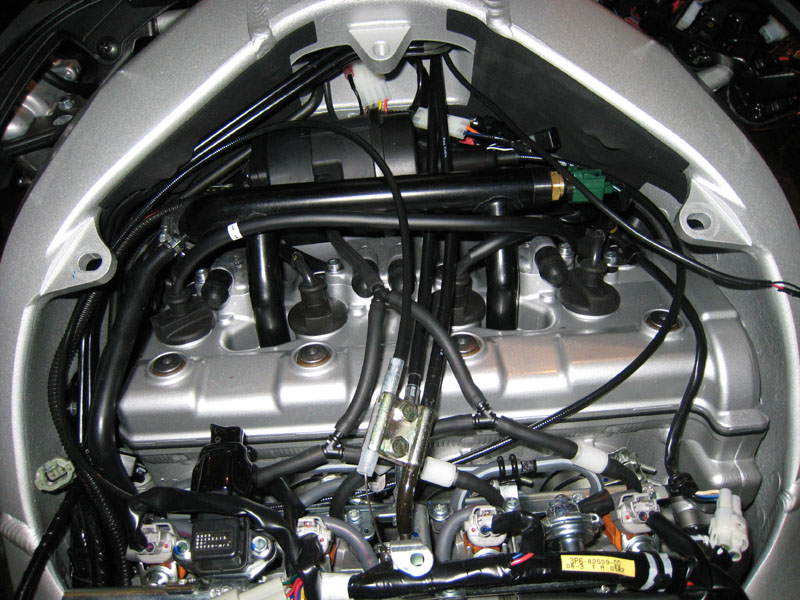IMO, using the MAP sensor's vacuum line is a bad idea.
Just curious as to why???? I have mine T into this line with no ill effects to my knowledge..
MAP =
Manifold
Absolute
Pressure In our FJR they simply call it the Intake Air Pressure Sensor. The FSM says, quote:
Intake air pressure sensor
The intake air pressure sensor is used for measuring the intake air volume. The intake air volume of
every intake stroke is proportionate to the intake air pressure. Therefore, the intake air volume can be
measured by measuring the intake air pressure. The intake air pressure sensor converts the measured
intake air pressure into electrical signals and sends those signals to the ECU. When the intake
air pressure is introduced into the sensor unit, which contains a vacuum chamber on one side of the
silicon diaphragm, the silicon chip that is mounted on the silicon diaphragm converts the intake air
pressure into electrical signals. Then, an integrated circuit (IC) amplifies and adjusts the signals and
makes temperature compensations, in order to generate electrical signals that are proportionate to
the pressure.
If the operation of the AVCC causes the pressure at the IAP to vary, part of the information that the ECU uses for fuel mapping will be wrong. The ECU has a default table that it uses if the IAP reading goes out of range. I have run my FJR with this sensor unplugged as a step in troubleshooting a driveability issue and if I didn't know that it was unplugged I never would have known from the way it ran due to the look up table. I have also run my engine with a mechanic's vacuum gauge teed into a bunch of sensors and regulators so I could watch it as I rode my bike. The IAP is indeed a fairly dynamic sensor and I personally wouldn't want to mess with it. YMMV.




